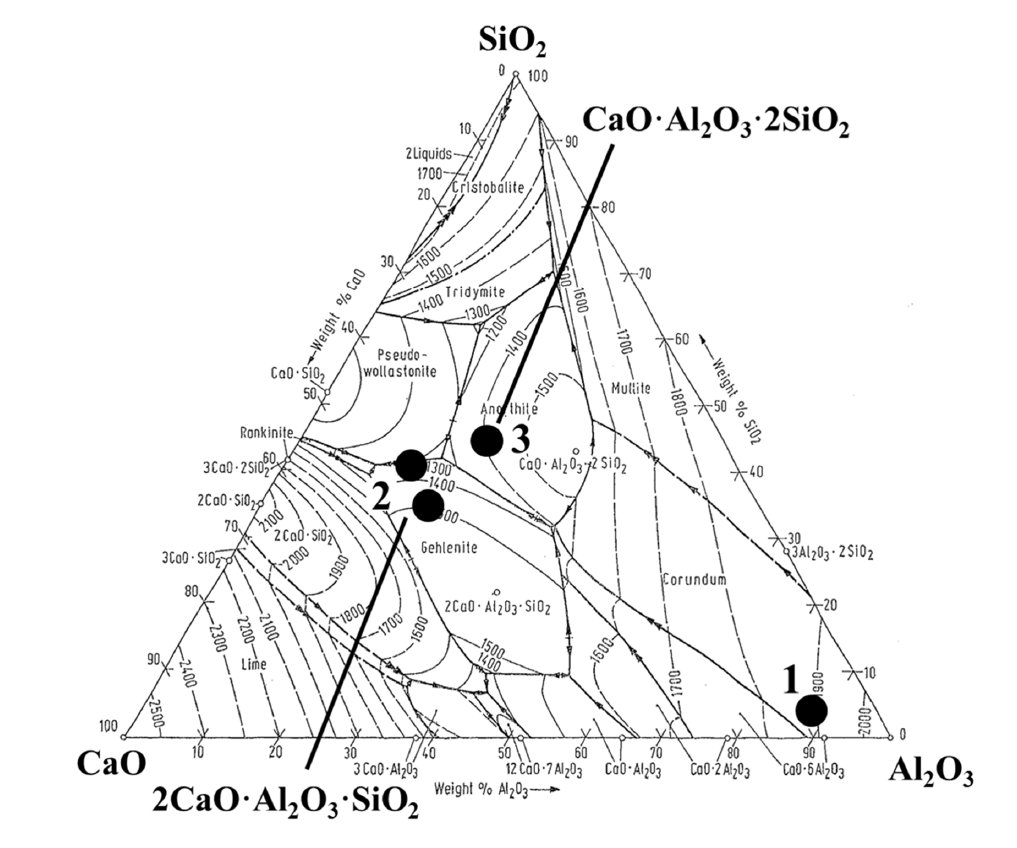
Alphabetical Index
Chemical Composition
Keyword Search
Named Inclusions
Steel Index
Exogenous Inclusions
Indigenous Inclusions
Macro Inclusions
Micro Inclusions
Nano Inclusions
Iron Oxide Inclusions
Nitride Inclusions
Oxide Inclusions
Phosphide Inclusions
Silicate Inclusions
Spinel Inclusions
Sulfide Inclusions
Refractory Inclusions
Slag Inclusions
Figure Browser
Help
Contact Us
Home
Modification of oxide inclusions by addition of Ca
Another direction for an improvement of mechanical machinability of steels is Ca-treatment for
modification of oxide-based non-metallic inclusions (such as SiO2, Al2O3, Al2O3-MgO, etc.).
The Ca-treatment can improve the characteristics of the formed calcium-based oxide inclusions
(e.g., composition, morphology, size, and physical and chemical properties) as well as the lubrication
effect between the cutting tool and steel piece. In this case, the main advantages of a Ca-treatment
for oxide-based inclusions in the liquid steel can be summarized as follows:
(i) to form the globular CaO-SiO2-... or CaO-Al2O3-... inclusions;
(ii) to avoid the presence of SiO2 oxides, which have a high deformability at T > 1000 °C and
which can increase the anisotropy of mechanical properties of steel after deformation;
(iii) to avoid a formation of Al2O3 and Al2O3-MgO clusters in the liquid steel and clogging
problems during casting;
(iv) an application of relatively soft CaO-SiO2-… and CaO-Al2O3-… inclusions as natural
lubricants for cutting tools during mechanical machining for improvements of the surface
quality of machined steels and to increase the tool life (reducing the tool wear etc.).
Aluminum and silicon deoxidized steel grades have compositions of oxide inclusions within Zone I
and Zone II of the ternary phase diagram, as is shown in Figure 1. Hard inclusions such as
Al2O3, SiO2 and 3Al2O3·SiO2 will fracture during rolling and form hard fragments. This is detrimental
for final mechanical properties and for the cutting tools during machining of such steel grades.
In addition, Al2O3-based inclusions often cause nozzle clogging during casting. Calcium addition results
in inclusion compositions moving in the direction of the arrows, towards Zones III and IV, respectively.
Inclusions of Zones III and IV are softer and have lower melting temperatures (1400–1500 °C),
a spherical shape, and better machinability properties. Thus, calcium aluminates form instead of Al2O3
inclusions in Al-deoxidized steels. In Si-deoxidized steels, mullite (Al6Si2O13) transforms into gehlenite
(Ca2Al[AlSiO7]) or anorthite (CaAl2Si2O8).

Figure 1: Compositions of different oxide inclusions precipitated in aluminum (a) and silicon (b) deoxidized steel grades.
Bletton et al. studied the effect of Ca-additions on the composition of oxide inclusions and
on the machinability of AISI 316L stainless steel after continuous casting and hot rolling. The main
types of oxide and sulfide inclusions in experimental trials of AISI 316L steel are listed in Table 1.
The typical compositions of oxide inclusions observed in experimental trials are shown in the
CaO-SiO2-Al2O3 ternary phase diagram shown in Figure 2. The comparative flank and crater
wear progressions obtained during machining of these steels are shown in Figure 23a,b.
A cemented carbide cutting tool was used for a conventional turning test using the cutting speed
180 m/min, the feed rate 0.25 mm/rev and the depth of cut 1.5 mm in dry machining. It can be seen
that the flank wear (FW) of the tool is approximately similar for all steels, during the initial 10 min of
machining. However, the FW values for the Ca-treated steels decreased significantly at a machining
time larger than 10 min. For instance, the FW of the Ca-treated steels was 39% (Steel 3) and 15%
(Steel 2) smaller in comparison to the reference steel (Steel 1) after 25 min of machining.

Table 1: Types of main inclusions in experimental trials of AISI 316L stainless steel.

Figure 2: Typical compositions of oxide inclusions observed in experimental trials of AISI 316L stainless steel.
Reference: Niclas Anmark, Andrey Karasev and Pär Göran Jönsson, The Effect of Different Non-Metallic Inclusions on the
Machinability of Steels, Materials 2015, 8, 751-783.